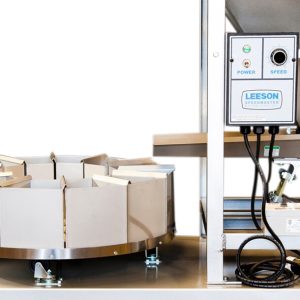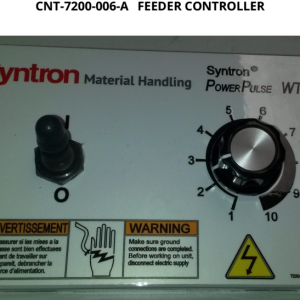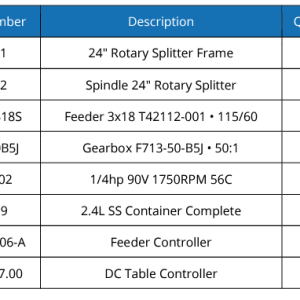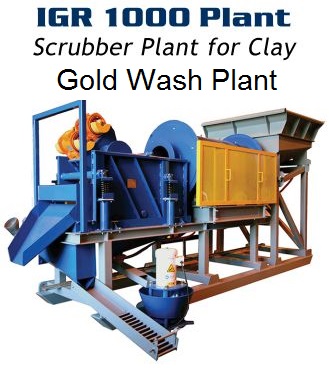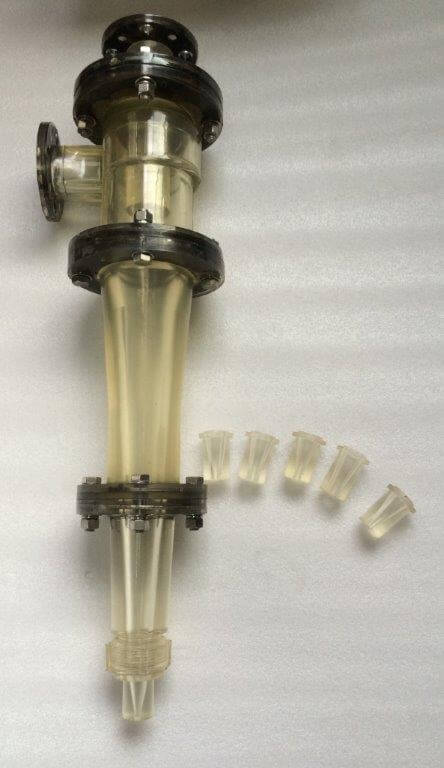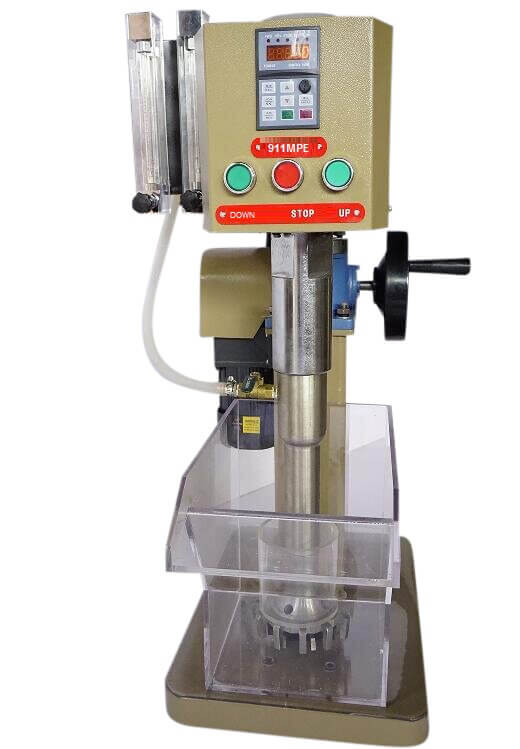The rotary sample splitter is designed and manufactured to give accurate (+/- 1%) splits of representative samples, consisting of dry, flowable material. The largest particle size the splitter will adequately handle is 1/2”, so the particle range is 1/2” x 0. The solids are placed in the feed hopper. The table rotation is turned on, and the rotation speed is adjusted by sight, to where one thinks particles will not bounce around when hitting the container edge, with the default to slower than faster.
- Table Diameter: 24″
- Hopper Size: 2.2 CF = 62 Liters
- Container Size: 2.4 Liter
- Number of Stainless Steel Containers: 12
- Voltage required 110 V/1 Ph/60 Hz or 220 V/1 Ph/50 Hz
- Optional Dust Cover +$3000
The sample splitter should be placed on a stable, flat surface. Appropriate electrical connections should be made. The stainless steel sample containers should be placed on the carousel tabletop in the manner indicated on the product literature, enclosed. The table rotation should be started by turning the variable speed control knob to about 35% and adjusting it to obtain 12 RPMs. Next, the vibrating feeder should be started, and adjust the feeder to a very slow feed rate of approximately 50 to 100 lbs. per hour, (at 100% it feeds 2 TPH). Fill the feed hopper with 24 liters of material (Maximum) [approximately 100 pounds of sand-sized quartz]. Allow the feed hopper to empty before stopping the feeder or table rotation. After the feed hopper is empty, stop the table rotation and remove the filled containers. Each container should now contain a representative sample of the material in the hopper.










